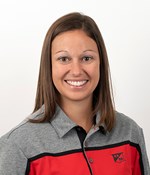Product and Agronomy Research (PAR) Results: Soybean Plant Population - Winona, MN
BY Dairyland Seed Agronomy Team
soybean plant population - Winona, MN
Description:
Plant population or final stand plant population in soybeans has been a hot topic for the last few years. The question of what is the optimum plant population for highest yield expression, will vary from field to field as well as areas within a field, with varietal differences impacting yields by plant population too. Diseases such as Sclerotinia White Mold (SWM) favor reducing plant population and nutrient deficiencies such as Iron Deficiency Chlorosis (IDC) favor increasing population. These factors influence the decision making process on what is the correct plant population for a field or parts of a field. Other factors such as weed control, canopy type (bushy or narrow) and plant height will impact this decision as well.
The other aspect of looking at plant populations is that whether it be as an agronomist or farmer we have all had instances in which plant populations have been reduced either by some calamity such as weather (hail, wind, sandblasting, frost) or animals (deer, turkeys) and we need to make decisions as to if replanting is warranted. This data will provide a better understanding as to what level, the bottom for plant populations might be.
Winona, MN
DSR-1919E™ was planted at various plant populations starting at 155,000 seeds/acre and ratcheting down to 40,000 seeds/acre in mostly 15,000 seeds per acre increments in 30-inch rows. This plot was planted on May 13th, 2022 which was an average planting date for soybeans in this area, with the harvest date being October 10th, 2022.
Results:
|
Variety |
Plant Population |
Yield |
Moisture |
Row Length |
Row Width |
# of Rows |
|
DSR-1919E™ |
40K |
52.23 |
10.1 |
745 |
30 |
6 |
|
65K |
63.96 |
10.1 |
746 |
30 |
6 |
|
|
80K |
65.44 |
9.9 |
746 |
30 |
6 |
|
|
95K |
68.77 |
10.0 |
747 |
30 |
6 |
|
|
110K |
64.8 |
10.0 |
748 |
30 |
6 |
|
|
125K |
69.52 |
10.0 |
749 |
30 |
6 |
|
|
155K |
66.85 |
10.0 |
749 |
30 |
6 |
|
|
140K |
67.69 |
10.0 |
750 |
30 |
6 |
Conclusion:
The yields for this trial were not surprising in that this field has very good soil fertility. What was surprising was how well these beans yielded with as low as the plant populations were. Typically, it has been this agronomist’s belief, that plant populations below 90- 95,000 plants/acre at this location would suggest replanting.
The results, which were again very positive, would indicate that this trial needs to be replicated in different locations, with different varieties over a longer time period. Other aspects which would be interesting to see would be areas with lower fertility levels and a shorter growing season, with less overall rainfall. The shorter growing season, lower fertility and rainfall levels might suggest other outcomes over a longer period of time.
 |
 |
 |
 |
 |
| Brian Weller Western Region 507.456.3034 |
Dan Ritter Central Region 219.863.0583 |
Branden Furseth Northern Region 608.513.4265 |
Mark Gibson Eastern Region 260.330.8968 |
Amanda Goffnett Eastern Region 989.400.3793 |
